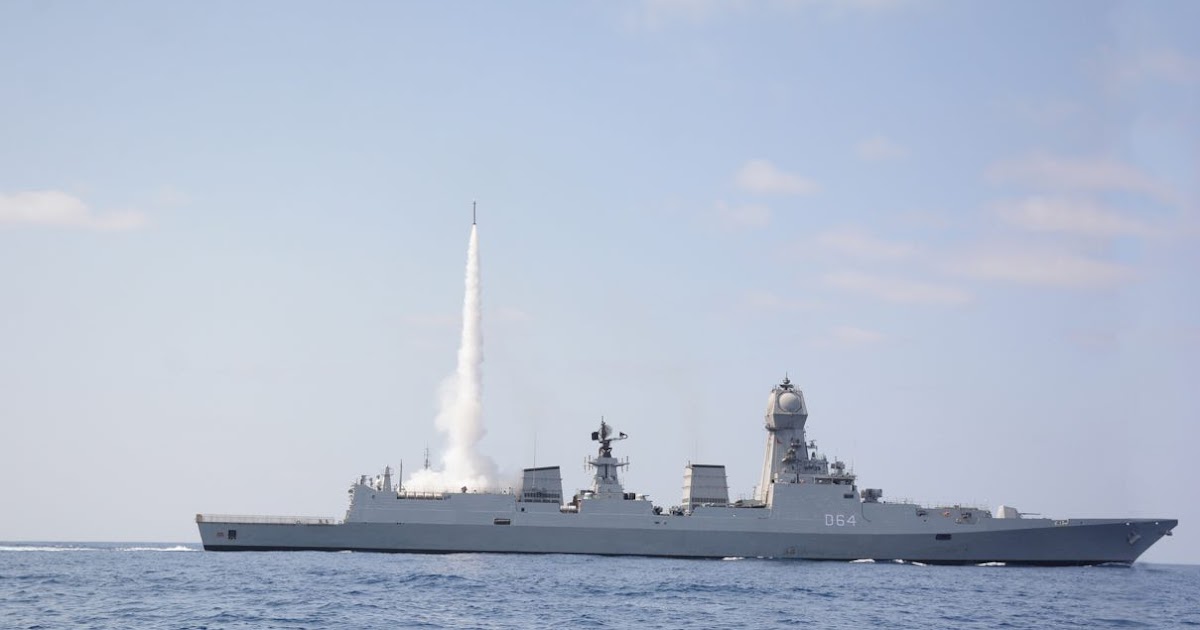
It is the Indian Army’s first tri-service missile, which will protect naval warships, air force bases and army combat units from air attack.
By Vikas Gupta
Defence News of India, 14 Dec 22
Kalyani Rafael Advanced Systems Private Limited (KRAS), on Tuesday rolled out in Hyderabad the 100th kit it has manufactured from Eponymous medium-range surface-to-air missile (MRSAM).
KRAS is a joint venture (JV) created by the Israeli company Rafael, in partnership with Kalyani Strategic Systems (KSS). They respectively hold 49 and 51% of the capital.
The Defense R&D Organization (DRDO) developed this deadly missile for the army, navy and air force, in close partnership with Israel Aerospace Industries (IAI).
It is the Indian Army’s first tri-service missile, which will protect naval warships, air force bases and army combat units from air attack.
About 20-30% of the MRSAM was developed by the DRDO, including the missile’s propulsion system based on a sophisticated twin-pulse rocket engine, its thrust vector controls and its electrical harness (wiring).
Israel Aerospace Industries (IAI) designed and developed the remaining 70-80% of the MRSAM, including the Elta MF-STAR radar, which is the heart of the system.
On July 11, 2019, the Indian Ministry of Defense awarded KRAS a $100 million contract to build the midsections of 1,000 missiles. These will be integrated with MRSAM components built elsewhere in combat-ready missile systems by the public sector defense contractor, Bharat Dynamics Ltd (BDL).
The MRSAM is considered one of the deadliest surface-to-air missiles in the world. The naval version of the MRSAM, which is called the LRSAM (Long-Range Surface to Air Missile), protects Indian warships from skimming anti-ship missiles. It is stored and fired from sealed cartridges below the decks of warships, to protect the missile from the corrosive marine environment.
The LRSAM has only been operationally deployed on three Indian Navy destroyers – INS Kolkata, Chennai and Kochi. Each carries 32 missiles in “vertical launch unit” containers. Now the LRSAM is installed on four more destroyers being built under Project 15B and seven frigates being built under Project 17A.
The IAF version of the MRSAM is mounted on trailers and fired from the outside at enemy fighters coming in to attack airbases and other high priority targets. The military version of the MRSAM is mounted on high mobility vehicles that follow tank columns moving across the country.
All three versions of the missile are identical except for the software that controls their “self-destruct” function.
The MRSAM is expensive, with a price tag of Rs 6 crore per missile. But this is considered reasonable by many, given that it takes down sophisticated fighters costing hundreds of crores; and protect warships that cost thousands of crores.
The MRSAM servicemen are so confident that in September 2016, when the army planned to strike Pakistani-backed terrorist camps across the Line of Control to avenge the killing of 19 Indian soldiers near Uri , the MRSAM – then still in development – was moved from BDL to protect a particularly vulnerable air base.
When the Indian commandos crossed over LoC on the night of September 28, 2016, the MRSAM was ready for use. It turned out that the missiles were not needed.
KRAS will supply more than 1,000 MRSAM production kits over the next 3-4 years. In the event of export orders, the numbers could increase.
Speaking on the occasion, Kalyani Group Chief Baba Kalyani said, “This delivery is not only a shining example of synergy between India and Israel and the private and public sectors, but also reinforces our commitment towards AatmaNirbhar Bharat as envisioned by our Prime Minister Narendra. Modi.






